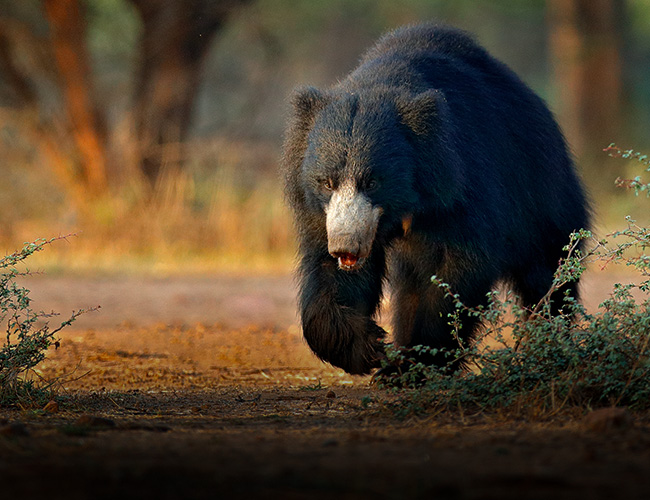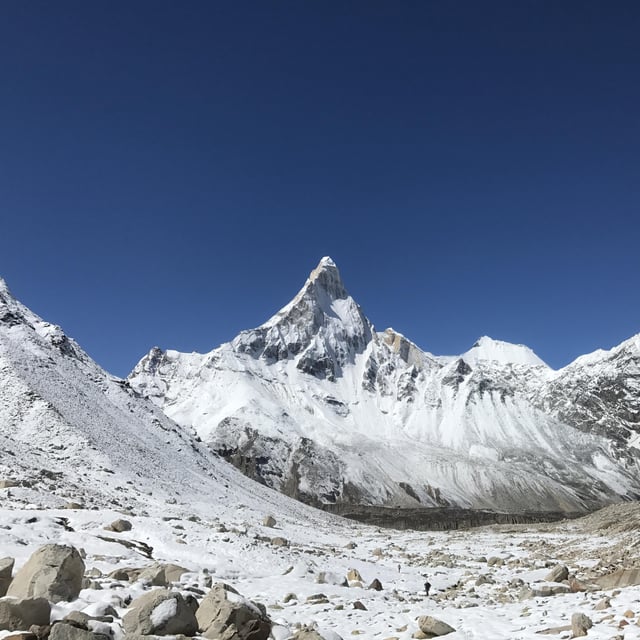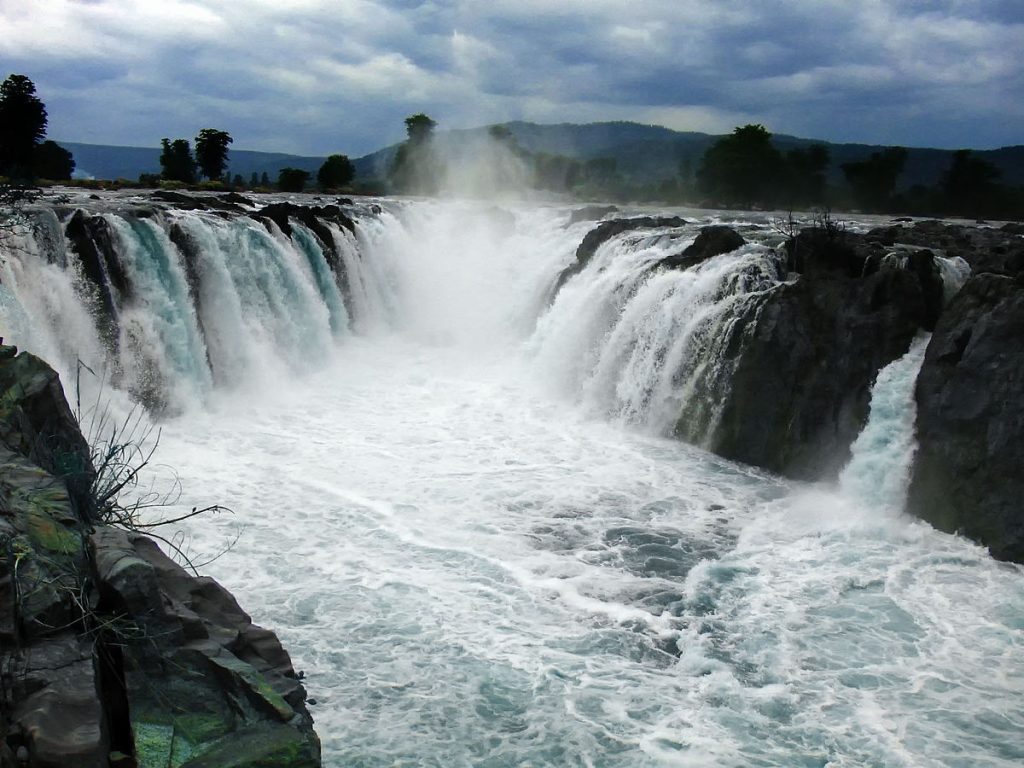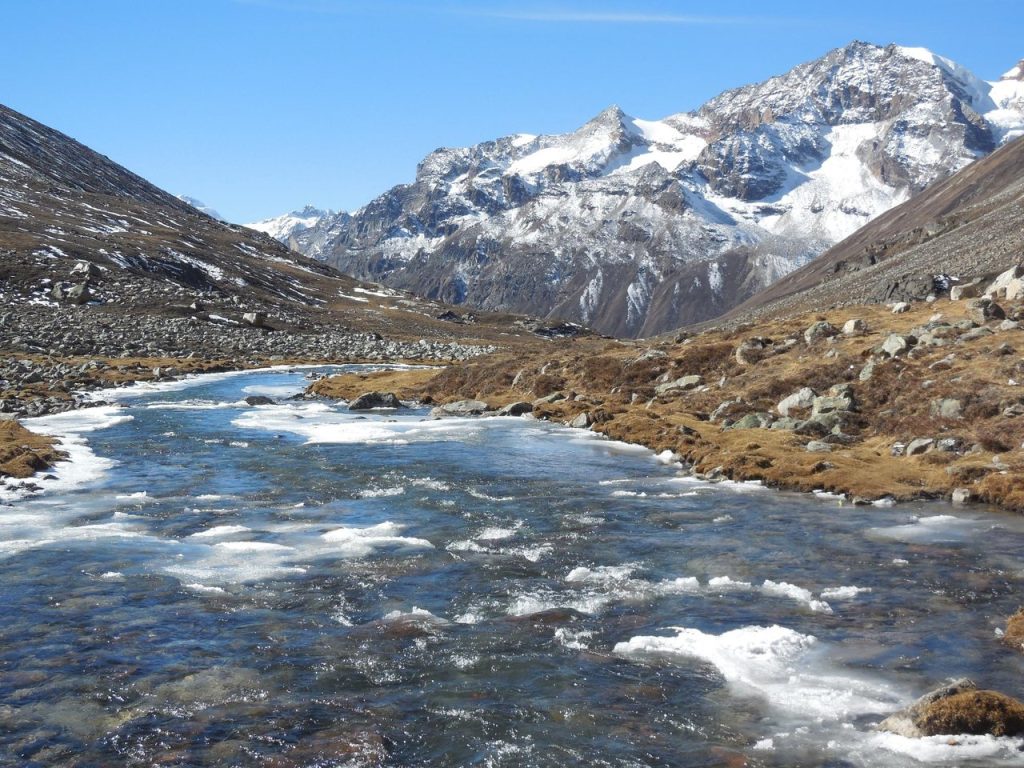Food India is a culinary adventure like no other. The diverse flavors and rich traditions captivate every palate.
Exploring Indian cuisine means diving into a world of vibrant spices and unique recipes. Each region offers its own special dishes, influenced by local culture and ingredients. From the creamy butter chicken of the north to the spicy curries of the south, there’s something for everyone.
Street food lovers will find heaven in bustling markets, while those seeking fine dining can enjoy elaborate meals in upscale restaurants. Indian food isn’t just about taste; it’s an experience of history and tradition, shared through every meal. So, get ready to embark on a flavorful journey across India, where every bite tells a story.
/cdn.vox-cdn.com/uploads/chorus_image/image/67000785/shutterstock_1435374326.0.jpg)
Credit: www.eater.com
Regional Cuisines
India is a land of diverse cultures and traditions, and this diversity is mirrored in its food. From the spicy curries of the north to the tangy flavors of the south, each region offers a unique culinary experience. Let’s embark on a delicious journey through India’s regional cuisines.
North Indian Delicacies
North Indian food is rich, hearty, and full of bold flavors. Picture yourself savoring the creamy butter chicken or feasting on a plate of Chole Bhature with a side of tangy pickles. These dishes are often cooked with ghee, giving them a distinct and mouth-watering taste.
- Butter Chicken: A creamy tomato-based curry with tender chicken pieces.
- Chole Bhature: Spicy chickpeas served with fluffy fried bread.
- Rogan Josh: A fragrant lamb curry from Kashmir.
South Indian Flavors
South Indian food is a celebration of spices and flavors. Imagine biting into a crispy Masala Dosa or relishing a bowl of tangy Rasam. The use of coconut, tamarind, and curry leaves adds a unique touch to these dishes.
- Masala Dosa: A rice crepe filled with spicy potato mix.
- Sambar: A lentil-based vegetable stew.
- Rasam: A tangy, spicy soup often served with rice.
Eastern Indian Treats
Eastern India is known for its sweets and subtle flavors. Think of savoring a Rasgulla or enjoying a bowl of Machher Jhol. Fish and rice are staples in this region, and the food is often less spicy but very flavorful.
- Rasgulla: Soft, spongy balls made from chhena and soaked in syrup.
- Machher Jhol: A light and flavorful fish curry.
- Pakhala Bhata: Fermented rice served with curd and vegetables.
Western Indian Dishes
Western India offers a mix of spicy and sweet flavors. Imagine dipping a piece of Thepla into a tangy pickle or savoring the sweetness of Puran Poli. The cuisine here is diverse, ranging from the coastal flavors of Goa to the vegetarian delights of Gujarat.
- Thepla: A spiced flatbread made from whole wheat flour.
- Puran Poli: A sweet flatbread stuffed with lentil and jaggery filling.
- Goan Fish Curry: A coconut-based fish curry with a burst of flavors.
Street Food Culture
India’s street food culture is a colorful tapestry of flavors, aromas, and bustling scenes. From the crowded alleys of Delhi to the serene beaches of Goa, street food is not just about eating; it’s an experience. The variety is endless, and the taste is unforgettable. Imagine biting into a spicy samosa or savoring a sweet jalebi. It’s like a festival in your mouth!
Iconic Street Foods
India’s street food is famous for its diversity. Here are some iconic street foods that you must try:
- Pani Puri: These little crispy balls filled with spicy water are a burst of flavor.
- Vada Pav: Often called the Indian burger, this spicy potato patty in a bun is a Mumbai favorite.
- Chole Bhature: A Delhi classic, this dish includes spicy chickpeas and puffy fried bread.
- Dosa: A thin, crispy pancake made from fermented batter, served with chutneys and sambar. A South Indian delight!
Popular Street Markets
If you want to dive into the world of Indian street food, visit these popular street markets:
- Chandni Chowk, Delhi: A paradise for food lovers. From spicy chaat to sweet jalebis, it has it all.
- Juhu Beach, Mumbai: Enjoy the seaside while munching on delicious street food like Pav Bhaji and Bhel Puri.
- Charminar, Hyderabad: Famous for its biryani and kebabs. The aroma will pull you in!
- MG Road, Bangalore: This bustling street offers everything from spicy dosa to tangy chaat.
Hygiene And Street Food
Street food is delightful, but hygiene is crucial. Here are some tips to ensure you enjoy it safely:
| Tip | Details |
|---|---|
| Look for Clean Stalls | Choose vendors who keep their area clean and wear gloves. |
| Check for Fresh Ingredients | Fresh food is safer. Avoid stalls with old or stale food. |
| Watch How Food is Prepared | Observe if the food is cooked properly and handled hygienically. |
| Drink Bottled Water | Avoid tap water. Always ask for bottled water. |
Remember, a little caution goes a long way. So, next time you’re in India, dive into the street food culture, but keep these tips in mind. Your taste buds will thank you!
Festive Foods
India is a land of festivals, and each celebration is marked by delicious foods that reflect the country’s rich cultural heritage. From vibrant sweets to savory dishes, every festival brings unique flavors and traditions to the table. Whether you’re a foodie or someone who loves to explore different cultures through their cuisines, Indian festive foods are sure to delight your taste buds.
Diwali Delights
Diwali, the festival of lights, is incomplete without its special treats. During Diwali, families come together to prepare and enjoy a variety of sweets and snacks. Ladoo, barfi, and jalebi are just a few of the mouth-watering sweets that adorn the festive plates. These sweets are often made with ingredients like ghee, sugar, and flour, making them rich and indulgent.
- Ladoo: Round sweets made from flour and ghee.
- Barfi: Fudge-like sweets made from condensed milk and sugar.
- Jalebi: Crispy spirals soaked in sugar syrup.
Each home has its own recipe, passed down through generations. The aroma of these sweets fills the air, creating a festive atmosphere that is hard to resist.
Holi Treats
Holi, the festival of colors, is all about fun, frolic, and food. One of the most iconic Holi treats is gujiya, a sweet dumpling filled with a mixture of khoya (dried milk) and nuts. Other popular foods include thandai, a refreshing milk-based drink spiced with cardamom, fennel, and saffron, and puran poli, a sweet flatbread stuffed with jaggery and lentils.
| Food | Description |
|---|---|
| Gujiya | Sweet dumpling with khoya and nuts. |
| Thandai | Spiced milk-based drink. |
| Puran Poli | Sweet flatbread stuffed with jaggery and lentils. |
These foods not only add flavor to the celebration but also bring families together to share the joy of Holi.
Eid Specialties
Eid is a time for feasting and rejoicing, and the culinary delights are a highlight of this festival. Sheer khurma, a rich dessert made with vermicelli, milk, and dates, is a must-have. Another favorite is biriyani, a fragrant rice dish cooked with meat, spices, and herbs. Kebabs, succulent pieces of marinated meat, are also enjoyed during Eid.
- Sheer Khurma: Vermicelli pudding with milk and dates.
- Biriyani: Fragrant rice dish with meat and spices.
- Kebabs: Marinated meat skewers.
These dishes are often prepared with love and care, bringing a sense of warmth and togetherness to the celebration.
Christmas Feasts
Christmas in India is celebrated with a mix of traditional and local foods. While the classic roast and plum cake are popular, many regions have their own special dishes. In Goa, for example, bebinca, a multi-layered cake made from coconut milk, flour, and sugar, is a festive favorite. In Kerala, achappam, a crispy snack made from rice flour, is enjoyed.
- Roast: Traditional roast meat.
- Plum Cake: Rich fruit cake.
- Bebinca: Multi-layered cake with coconut milk.
- Achappam: Crispy rice flour snack.
Christmas feasts in India are a blend of global and local flavors, making the celebration unique and memorable.
As you can see, India’s festive foods are as diverse as its culture. Each festival brings its own set of delicious dishes, making every celebration a culinary adventure. So, next time you find yourself in India during a festival, make sure to indulge in these delightful treats!

Credit: alittleadrift.com
Traditional Cooking Techniques
India’s culinary heritage is rich and diverse. Traditional cooking techniques play a vital role in preserving unique flavors. These methods have been passed down through generations. They ensure each dish captures the essence of Indian culture and history.
Tandoori Cooking
Tandoori cooking involves the use of a tandoor, a clay oven. Meat, bread, and vegetables are cooked at high temperatures. This method gives food a smoky flavor and crispy texture. Marinated ingredients are skewered and placed in the tandoor. The result is a mouth-watering dish with a unique taste.
Dum Pukht Method
Dum Pukht is a slow cooking technique. Food is cooked in a sealed pot over a low flame. This method ensures the ingredients cook in their own juices. Spices and herbs release their full flavor. The dish becomes tender and aromatic.
Clay Pot Cooking
Clay pot cooking uses earthenware pots to prepare meals. The pots retain heat and moisture. This helps in cooking food evenly. The earthy flavor of the clay enhances the taste. This technique is common in rural areas of India.
Fermentation Techniques
Fermentation is used to make dishes like dosa and idli. Rice and lentils are soaked and ground into a batter. The batter is left to ferment overnight. This process creates a unique sour flavor. Fermented foods are also easier to digest.
Spices And Flavors
India is a land where food is much more than sustenance; it’s an experience. The spices and flavors of Indian cuisine are what make it stand out. They give the dishes their unique taste and aroma, turning every meal into a feast for the senses. Let’s dive into the vibrant world of Indian spices and flavors, and understand what makes them so special.
Essential Spices
Indian cooking relies on a variety of spices, each bringing its own unique taste and health benefits. Here are some essential spices you’ll find in an Indian kitchen:
- Turmeric: Known for its bright yellow color and earthy flavor, turmeric is used in many Indian dishes. It’s also praised for its anti-inflammatory properties.
- Cumin: This spice has a warm, nutty flavor and is often used in curry powders and spice blends.
- Coriander: Both the seeds and leaves are used. The seeds add a citrusy flavor, while the leaves, also known as cilantro, add freshness.
- Cardamom: This sweet and aromatic spice is used in both savory and sweet dishes, from biryanis to desserts.
- Mustard Seeds: These tiny seeds pack a punch with their pungent flavor, often used in tempering dishes.
Regional Spice Blends
India is a vast country with diverse cuisines. Each region has its own unique spice blends:
| Region | Spice Blend | Description |
|---|---|---|
| Punjab | Garam Masala | A mix of ground spices including cinnamon, cardamom, cloves, and black pepper. It’s used to add warmth and depth to dishes. |
| Gujarat | Dhana Jeera | A blend of coriander and cumin seeds, roasted and ground together. It’s used to season vegetables and lentil dishes. |
| Kashmir | Rogan Josh Masala | This blend includes fennel, dried ginger, and other spices, giving the famous Rogan Josh its distinctive flavor. |
Balancing Flavors
Indian cuisine is all about balance. The flavors must complement each other. Here’s how you can achieve that balance:
- Sweetness: Use ingredients like jaggery or honey to add sweetness.
- Sourness: Lemon juice, tamarind, and yogurt can add a tangy taste.
- Saltiness: Salt is essential, but you can also use ingredients like soy sauce in some fusion dishes.
- Bitterness: Ingredients like fenugreek and mustard greens add a subtle bitterness that balances other flavors.
- Spiciness: Chili peppers and black pepper add heat. Adjust the quantity to suit your taste.
Remember, the goal is to create harmony. Each flavor should complement the others, creating a symphony of taste in every bite.
So, are you ready to embark on a flavorful journey through Indian cuisine? Grab your spices and start cooking!

Credit: www.britannica.com
Vegetarian And Vegan Options
India, with its rich culinary history, offers a plethora of vegetarian and vegan options. The country is a paradise for those who follow a plant-based diet, with a variety of flavors, textures, and colors in every dish. Let’s dive into some of the delightful choices you can explore when you visit India.
Plant-based Staples
In India, vegetarianism is not just a diet; it’s a way of life. Here are some staples you will find:
- Rice: The backbone of many Indian meals. It’s versatile and pairs well with curries, vegetables, and lentils.
- Lentils (Dal): A protein-packed staple that’s hearty and healthy. Every region has its own version, from yellow moong dal to black urad dal.
- Vegetables: Fresh, seasonal, and a rainbow of colors. Indian markets are brimming with a variety of veggies that are cooked in numerous ways.
- Flatbreads: Chapati, roti, and naan are the perfect companions to any Indian meal. They are usually made from whole wheat flour and are a great source of fiber.
Popular Vegetarian Dishes
If you think vegetarian food is boring, think again! Indian cuisine offers an array of mouth-watering vegetarian dishes:
- Paneer Butter Masala: Soft paneer cubes cooked in a creamy tomato gravy. It’s rich, flavorful, and a favorite among many.
- Chole Bhature: Spicy chickpeas served with fluffy fried bread. It’s a North Indian delicacy that’s hard to resist.
- Baingan Bharta: Smoked eggplant cooked with onions, tomatoes, and spices. It’s got a unique flavor that’s simply amazing.
- Vegetable Biryani: A fragrant rice dish cooked with a medley of vegetables and aromatic spices. It’s a complete meal in itself.
Vegan Adaptations
Vegan travelers, rejoice! Many Indian dishes can be easily adapted to fit a vegan diet. Here’s how:
- Substitute Paneer: Tofu is a great alternative. Try using tofu in dishes like Palak Tofu (spinach and tofu) instead of Palak Paneer.
- Use Coconut Milk: Replace dairy milk with coconut milk in curries. It adds a rich, creamy texture and a hint of sweetness.
- Opt for Plant-Based Oils: Use oils like coconut or sunflower oil instead of ghee (clarified butter). This simple swap makes many dishes vegan-friendly.
- Choose Veggie-Based Dishes: Stick to dishes that naturally don’t contain animal products. For instance, Aloo Gobi (potato and cauliflower) is typically vegan.
Indian cuisine is wonderfully diverse and accommodating. Whether you are vegetarian or vegan, you will find plenty to savor and enjoy.
Indian Sweets And Desserts
India is a land of diverse cultures, and this diversity is beautifully reflected in its cuisine. One of the most delightful aspects of Indian cuisine is its array of sweets and desserts. From traditional mithai to modern twists, Indian desserts are a treat for the taste buds. Let’s dive into the world of Indian sweets and discover what makes them so special.
Traditional Mithai
Mithai, or traditional Indian sweets, are an integral part of Indian festivals and celebrations. These sweets are often made with ingredients like milk, sugar, and ghee, and are usually flavored with cardamom, saffron, and rose water. Here are some classic mithai that you must try:
- Gulab Jamun: Soft, deep-fried balls soaked in sugar syrup.
- Rasgulla: Spongy cheese balls in a light sugar syrup.
- Barfi: Fudge-like sweets made with condensed milk and sugar.
- Jalebi: Crisp, spiral-shaped sweets soaked in syrup.
Regional Desserts
India’s regional diversity means that each state has its own unique desserts. These regional sweets are often tied to local festivals and traditions. Here are some regional delights:
| Region | Specialty |
|---|---|
| West Bengal | Rasgulla, Sandesh |
| Rajasthan | Ghewar |
| Punjab | Phirni |
| South India | Mysore Pak, Payasam |
Modern Twists
While traditional sweets hold a special place, modern twists on these classics are gaining popularity. Fusion desserts combine traditional flavors with contemporary techniques, creating a whole new experience. Here are some examples:
- Chocolate Barfi: The rich taste of barfi with a chocolatey twist.
- Gulab Jamun Cheesecake: A fusion of creamy cheesecake and syrupy gulab jamun.
- Rasgulla Tiramisu: An Indian take on the classic Italian dessert.
These modern twists are not just delicious, but also a testament to the versatility of Indian sweets. They bring together the best of both worlds, offering something new yet familiar.
So, whether you have a sweet tooth or just a curious palate, Indian sweets and desserts are sure to leave you craving for more. Next time you encounter an Indian dessert, don’t just eat it—savor it. After all, every bite tells a story of India’s rich culinary heritage.
Influences On Indian Cuisine
Indian cuisine is like a symphony, with each dish playing its own note in a harmonious melody. The flavors are bold, the spices are plentiful, and the influences are many. Over the centuries, Indian food has been shaped by a myriad of cultures, each adding their own unique twist to the pot. Let’s dive into the rich tapestry of influences that have made Indian cuisine what it is today.
Historical Influences
History has a way of leaving its mark, and Indian cuisine is no exception. The ancient civilizations of the Indus Valley and Vedic period laid the groundwork with their use of grains, legumes, and dairy. Spices like turmeric and mustard seeds, which are now staples, were used as early as 3000 BCE. Isn’t it fascinating how these ancient practices still resonate in modern kitchens?
Trade routes also played a huge role. The Silk Road and Spice Route brought exotic ingredients from far-off lands. Imagine the first time someone in India tasted a chili pepper from the Americas! That’s right; chilies are not native to India but were introduced by the Portuguese. Who would have thought?
Colonial Impact
Colonial powers, especially the British, Dutch, and Portuguese, left a lasting impact on Indian food. The British introduced the concept of tea time, which is now a daily ritual in many Indian homes. They also brought potatoes and tomatoes. Can you picture Indian cuisine without these now-essential ingredients?
Portuguese influence is evident in Goan cuisine. Dishes like Vindaloo and Sorpotel are direct descendants of Portuguese recipes. The use of vinegar and the method of marinating meat in spices are all gifts from the colonial era. It’s a small world, after all.
Global Fusion
In today’s globalized world, Indian cuisine continues to evolve. Modern chefs are blending traditional Indian flavors with techniques and ingredients from around the globe. The result? A delightful fusion that surprises and delights the palate.
Consider the popularity of Indo-Chinese food, a blend of Indian spices and Chinese cooking techniques. Dishes like Hakka Noodles and Chili Chicken are now beloved staples. Who knew soy sauce and garam masala could be such a perfect match?
And let’s not forget the influence of the Indian diaspora. Whether it’s Indian-American fusion in the U.S. or Indian-British in the U.K., each community has put its own spin on traditional dishes. Have you ever tried a Chicken Tikka Masala pizza? It’s a thing, and it’s amazing!
Indian cuisine is a testament to the power of cultural exchange. Each bite is a journey through history, with each influence adding a layer of richness and complexity. So the next time you enjoy an Indian meal, take a moment to appreciate the many hands that have stirred the pot over the centuries.
Frequently Asked Questions
What Is The Famous Food Of India?
India is famous for dishes like biryani, samosa, butter chicken, and masala dosa. Each region offers unique flavors and specialties.
What Is India’s Main Dish?
India’s main dish is typically rice or roti served with a variety of curries and vegetables. Popular options include biryani, dal, and paneer.
What Are 10 Good Dinner Foods In Indian?
1. Butter Chicken: Creamy and flavorful curry. 2. Paneer Tikka: Spiced grilled paneer. 3. Biryani: Aromatic rice dish. 4. Dal Makhani: Rich lentil stew. 5. Rogan Josh: Fragrant lamb curry. 6. Chole Bhature: Spicy chickpeas with fried bread. 7. Masala Dosa: Crispy rice crepes.
8. Aloo Gobi: Potato and cauliflower curry. 9. Palak Paneer: Spinach and paneer curry. 10. Fish Curry: Spicy and tangy fish.
What Is The #1 Indian Dish?
The #1 Indian dish is Biryani. This flavorful rice dish combines aromatic spices, tender meat, and fragrant basmati rice. Biryani is highly popular and cherished across India.
Conclusion
India’s food scene offers a rich and diverse experience. From spicy curries to sweet desserts, every dish tells a story. Exploring food in India is a journey through history and culture. Each region has unique flavors and traditional recipes. Street food provides quick, tasty bites.
Restaurants serve elaborate meals. Food festivals showcase the best of Indian cuisine. Whether you enjoy vegetarian or non-vegetarian, India has something delicious for you. Dive into the world of Indian food and enjoy the culinary adventure.






